Editor Note: This is an excerpt of two reports that the Michigan DNR issued in 1977 and 2004. It offers a short history of the Saginaw Bay Fishery and the reasons for its collapse in the 1940s. The notes in the final part of this post reflect the situation in the Bay 15 years ago. A lot has changed in the history of the Great Lakes fishing.
Saginaw Bay’s Status as an Important Fishery
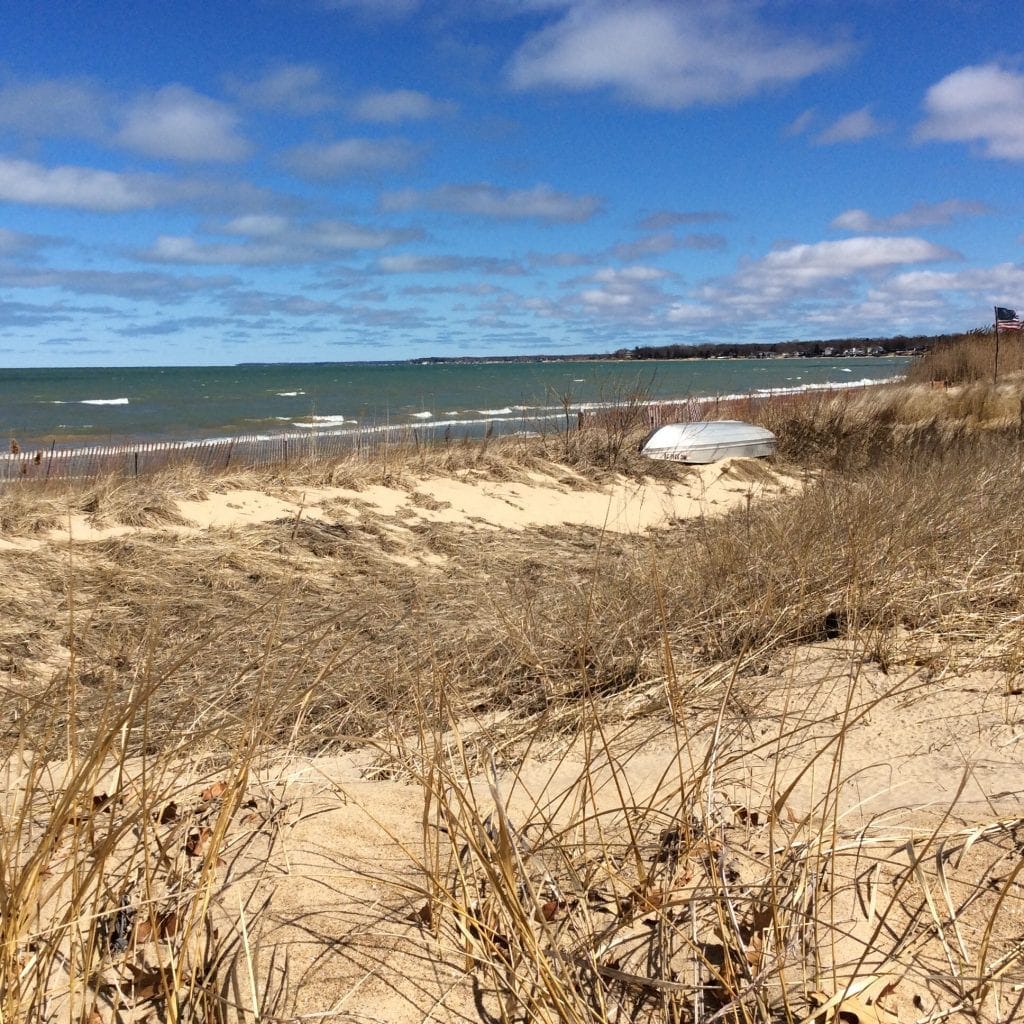
Historically, Saginaw Bay supported Lake Huron’s largest commercial walleye fishery and was second in the Great Lakes to only Lake Erie.
The earliest commercial fisheries dated to the 1830s, and walleye were specifically noted in catch records as early as 1858.
Saginaw Bay supported the second-largest walleye fishery on the Great Lakes until a precipitous decline occurred in the 1940s. Most of the catch was made during the spawning migration into the Bay’s shallow, inner part, but some smaller walleyes were taken during fall migration. All evidence indicates that the inner part of the Bay and its tributaries served as the major spawning and nursery grounds; the outer part of the bay and the adjacent waters of Lake Huron was the summer home of adult and subadult walleyes. Evidence was presented by Schneider and Leach (1978) that this population contributed to fisheries as far away as Thunder Bay.
Impact of Logging and Early Farming Practices
In 1864, a fall and winter fishery was initiated on the Saginaw and Shiawassee rivers, which, by the end of the 1860s, was averaging 68 metric tons of yellow perch, northern pike, black bass, and walleyes per year. These fish reportedly moved up into the rivers during storms on the Bay. The walleyes were tiny —averaging only 4 ounces —and many were wasted because they were too small to be used.
By 1879 this fishery was reputedly declining because of sawmill pollution. A size limit was finally imposed in 1894, but undersized fish were still being taken 10 years later. This fishery dwindled and was closed in 1908, but as late as 1940, fingerling perch still migrated up the Saginaw and Cass rivers to Frankenmuth.
The fishery was supported by reproduction in the watershed’s rivers and on offshore reefs. River-based reproduction was lost first due to a progression of habitat degradation. Rivers were clogged with the products and waste from the logging industry. As watershed usage gave way to agriculture, sedimentation increased, further degrading the river spawning substrate.
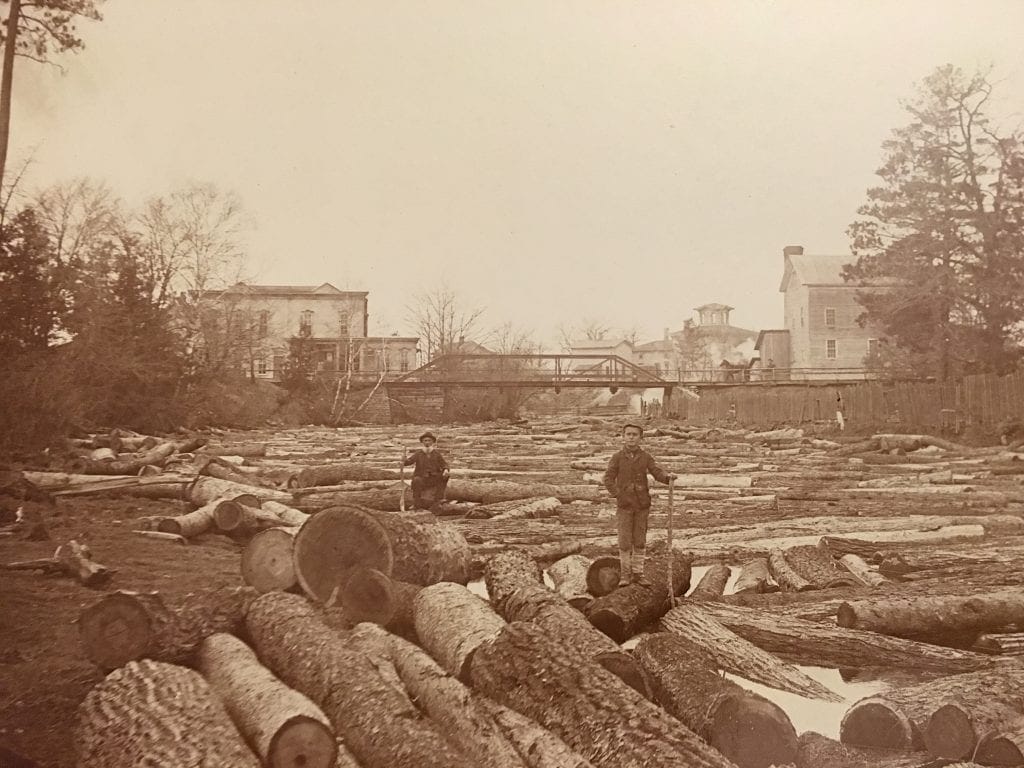
By the turn of the 20th Century, numerous dams were constructed, impeding spawning walleyes’ migration. As the Saginaw River system became industrialized, water was further polluted. During this time, reef-based reproduction sustained the bay’s walleye fishery. Eventually, it too succumbed to habitat loss fueled by sedimentation and reef degradation.
Saginaw River Water Quality impacts the Bay
As pointed out earlier, sawmills affected the Saginaw River fisheries as far back as 1879. The lumbering boom was over by the turn of the century, but other kinds of pollution have increased through the years. A siltation problem in the river (and to a lesser extent in the Bay), initiated by logging, was surely aggravated by intensive agricultural practices —including ditching and tiling —and by the sluggish current.
Nutrients contributed by the rich soils, fertilizers, and domestic sewage, increased substantially as the Saginaw Valley developed. Populations in the four major cities in the watershed (Bay City, Flint, Saginaw, and Midland) expanded from 85,000 in 1900 to 322,000 in 1950. Bay City and Saginaw did not install primary sewage treatment plants until the early 1950s.
The Crash of the Saginaw Bay Fishery
The fishery peaked in 1942 at 930,000 kg (2,050,299 lbs) of harvest before it collapsed in 1944. Several localized walleye fisheries of Saginaw Bay collapsed around the turn of the century due to over-harvesting. Still, the open water fishery sustained an average yield of 458,000 kg ( 1,009,717 lbs.) from 1885 through 1950.
Fluctuations in the Saginaw Bay fishery during this time probably represented repeated periods of overfishing and recovery. Because the fishery was sustained for such a long period, the collapse in 1944 is not attributed to the commercial fishery. Instead, the collapse is attributed to a series of year class failures resulting from habitat loss and degradation. However, the fishery’s intensive exploitation hastened the demise of the population and left it vulnerable to the effects of recruitment failures.
Alewives Take Over the Bay
Shortly after the collapse of the fishery in the 1940s, the bay was invaded by alewives. Alewives and the nonnative rainbow smelt Osmerus mordax were thought to have suppressed any possible natural recovery by preying on newly hatched walleye fry.
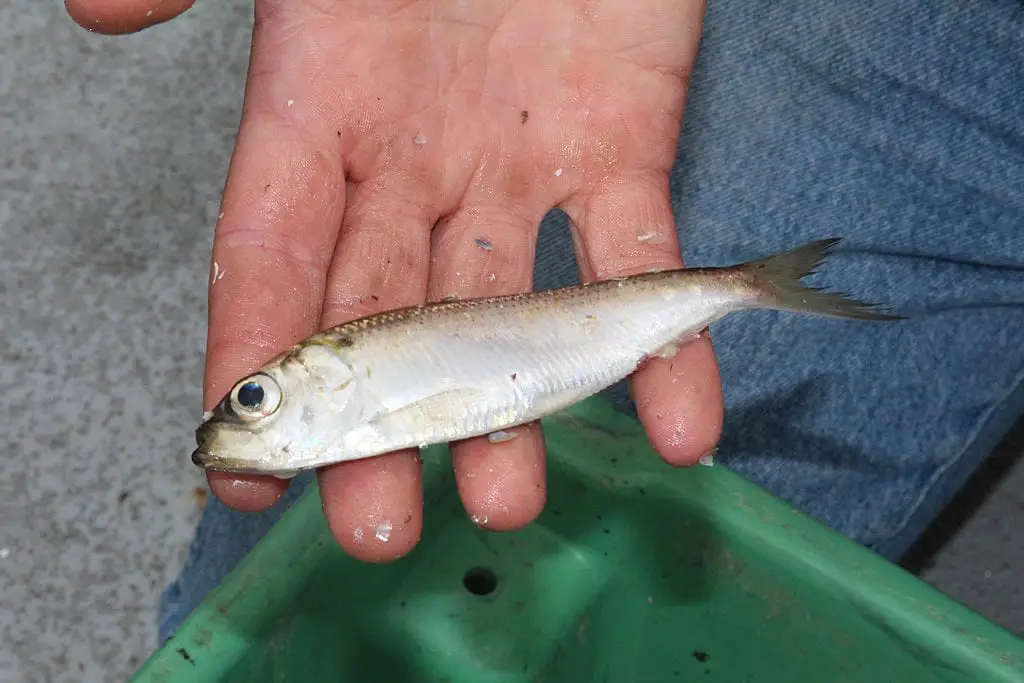
Improvements to water quality in the bay, largely brought about by the passage of the Clean Water Act of the early 1970s, provided the foundation for a walleye recovery. Walleye fingerlings were stocked by the Michigan Department of Natural Resources (MDNR) in the early 1980s, and a sport fishery soon emerged. Over time, the walleye population and fishery grew, but with stocking at its maximum capacity and habitat and recruitment limitations still in place, the fishery eventually plateaued by the mid-1990s, well short of full recovery.
Walleye Status in Saginaw Bay Fishery in 2004
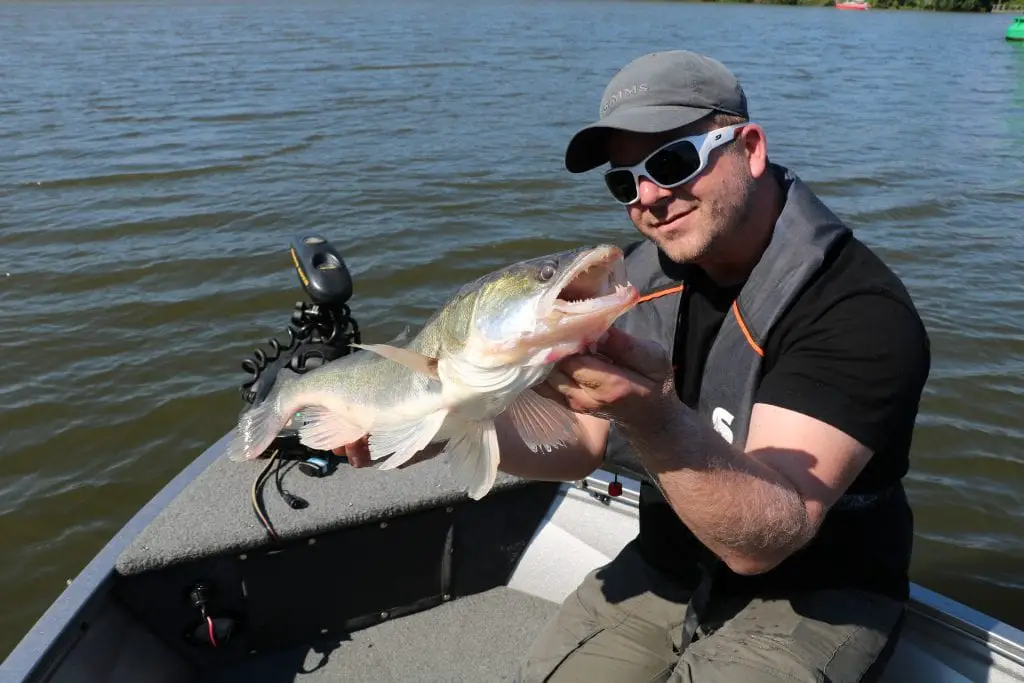
The modern-day walleye population in the bay is supported by renewal from both stocking and natural reproduction and supplemented by immigration. Natural reproduction is limited to unimpeded portions of certain rivers, and reef-based reproduction is still lacking. Despite the three sources of walleye to the bay (limited river-based natural reproduction, stocking, and immigration), the bay’s walleye population and fishery still subsisted short of the full potential of the habitat and prey base. The bay’s ecosystem also continued to suffer from the effects of an overabundant (underutilized) prey base.
Source for the History of Saginaw Bay Fishing
Fielder, D. G., and J. P. Baker. 2004. Strategy and options for completing the recovery of walleye in Saginaw Bay, Lake Huron. Michigan Department of Natural Resources, Fisheries Special Report 29, Ann Arbor.
History of the Walleye Fisheries of Saginaw Bay, Lake Huron James C. Schneider Fisheries Research Report No. 1850 November 14, 1977
Walleye Fishing on Saginaw Bay
Related Reading About the Saginaw Bay Fishing
- Walleye Fishing the Steeples in Saginaw Bay
- How to Make Perfectly Prepared Walleye
- Saginaw Bay Pollution – Officially Polluted for 30 years.
- Changes in Michigan DNR Rules Shut Down Commerical Fishing in 2021

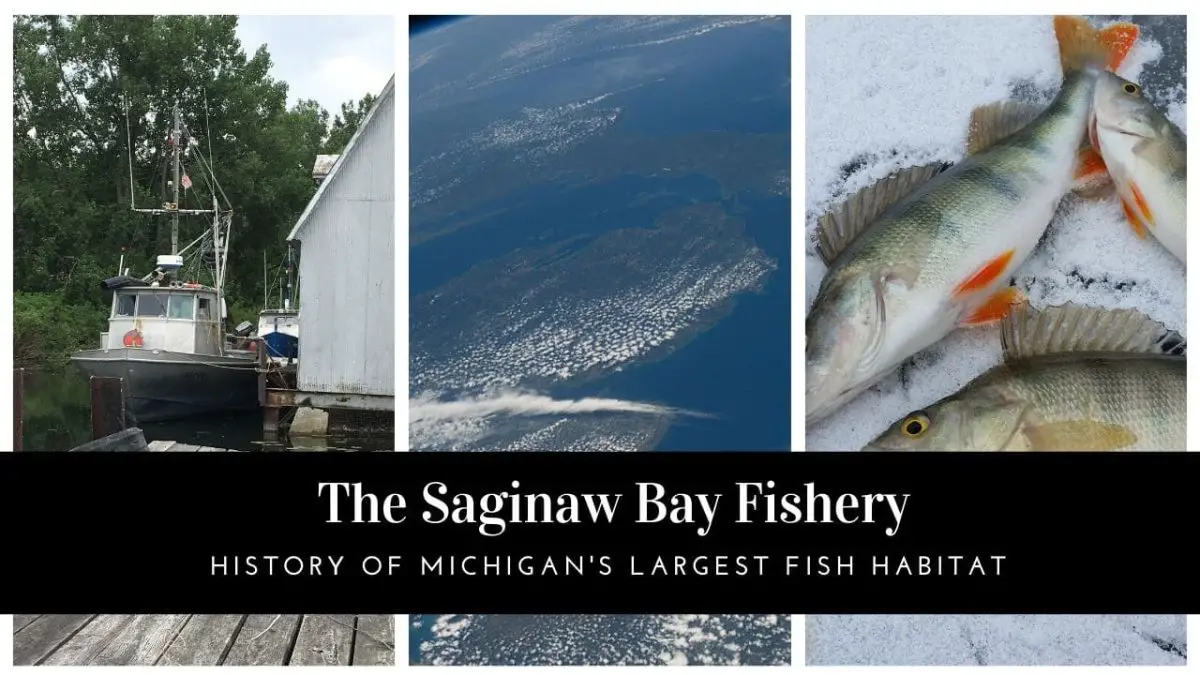


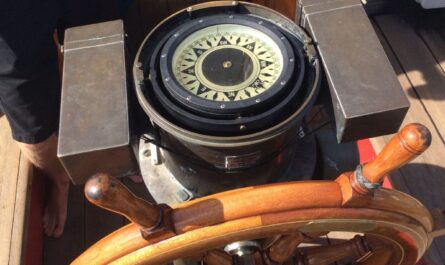

Awesome!